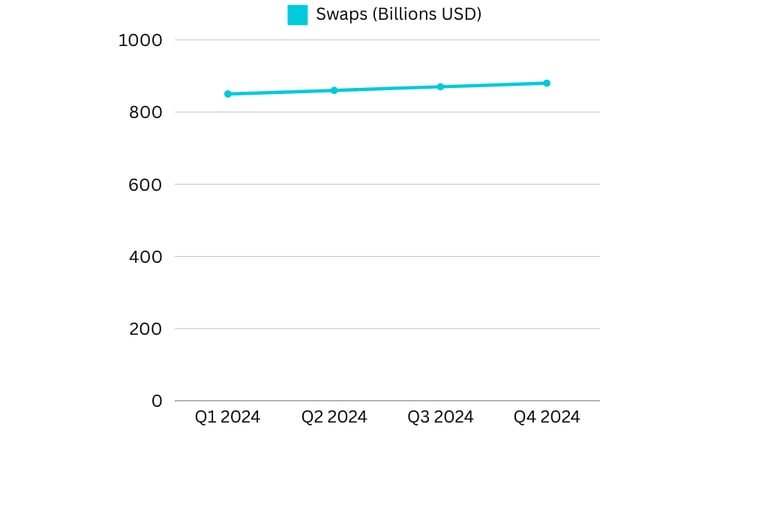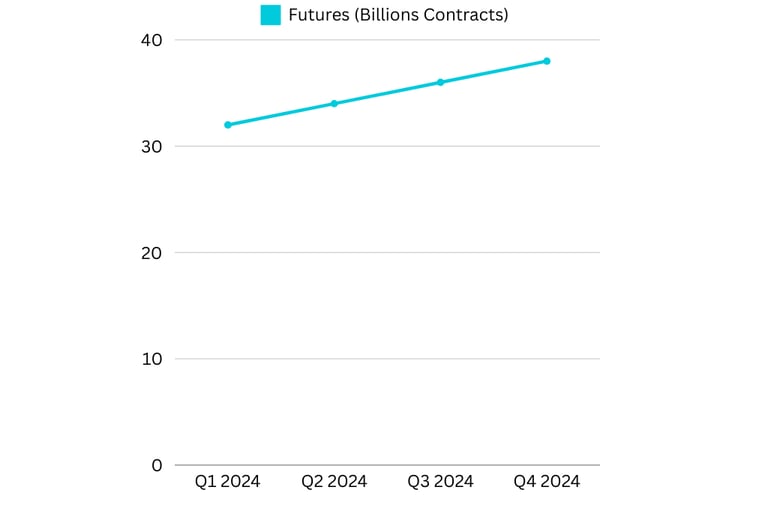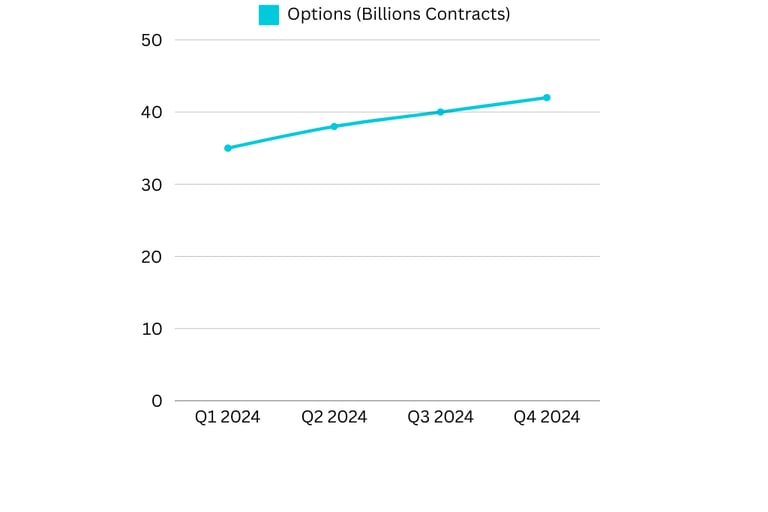Effect of the US election results on a financial derivatives market
This article explores the effect of US elections on three of the most common types of financial derivatives: futures contracts, options, and swaps.
FINANCE
Jakub De Vries
11/23/20243 min read


Introduction
The financial derivatives market has experienced significant growth in popularity over the past three decades, with many investors using them to diversify their portfolios and mitigate risk. Prominent investors such as Warren Buffett and George Soros are known for incorporating derivatives into their strategies. This article examines the influence of U.S. elections on the volatility within the financial derivatives market.
An overview of Financial Derivatives
Financial derivatives create contracts that derive changes in the value of underlying assets, such as commodities, stocks, or other investments. Investors use derivatives to hedge against market fluctuations, making their investments less dependent on market volatility. This article explores the effect of US elections on three of the most common types of financial derivatives:
futures contracts
options
swaps.
Why the U.S. Election Matters for Financial Derivatives
As of the time of writing, the U.S. economy is the largest in the world, with a nominal GDP of $27.36 trillion and a labor force of 168.7 million people. These figures underscore the critical role of U.S. elections in global finance. A shift in government leadership from Democrats to Republicans often brings a wave of new policies. Historical trends demonstrate that such significant changes can impact financial markets, including derivatives.
The Role of Futures Contracts in Mitigating Market Uncertainty
How Options Provide a Safety Net for Risk-Averse Investors
The Role of Swaps in Navigating Monetary Policy Shifts
Conclusion
Futures contracts are primarily designed to hedge against volatile factors such as inflation, commodity prices, and currency fluctuations. During periods of uncertainty, the demand for this type of derivative tends to rise. For example, the energy sector will likely face policy shifts under a new administration, prompting increased reliance on futures contracts to stabilize operations and mitigate the potential adverse effects of these changes.
Options are a tool investors use to protect their investments by providing the flexibility to withdraw from a transaction within a specified period. Leading up to the election, many investors turned to options to protect against potential downturns in the stock market. Risk-averse investors, in particular, favor options to hedge their portfolios, viewing the cost of the 'insurance' premium as a small price compared to the potential losses from market volatility.
Swaps are widely used to manage interest rate risk and currency fluctuations. A new administration often makes adjustments in monetary policy, influencing interest rates and the value of the U.S. dollar. In response to these risks, many hedge funds are likely to adjust their investment strategies, which could lead to a short-term decline in profitability.
The U.S. election triggered changes across various aspects of life, industries, and financial systems. This article analyzed its impact on financial derivative markets, where significant players prioritize caution by utilizing derivatives to hedge against uncertainty. One certainty is that change is inevitable. Consequently, investors mitigate exposing their funds and net worth to significant risks during this volatile period. Futures and options have been significantly more impacted than swaps due to their lower overall market value.






Source: CME Group (2024). Monthly Futures and Derivatives Market Activity Data
Source: CME Group (2024). SOFR Options Market Analysis.
Source: Bloomberg (2024). Swaps Market Overview
This graph illustrates the increased volume of futures contracts traded throughout 2024.
This graph illustrates the significant increase in the volume of options traded during 2024, reflecting changing market conditions.
This graph illustrates the increased volume of swaps traded throughout 2024, highlighting market reactions to shifting economic conditions.
